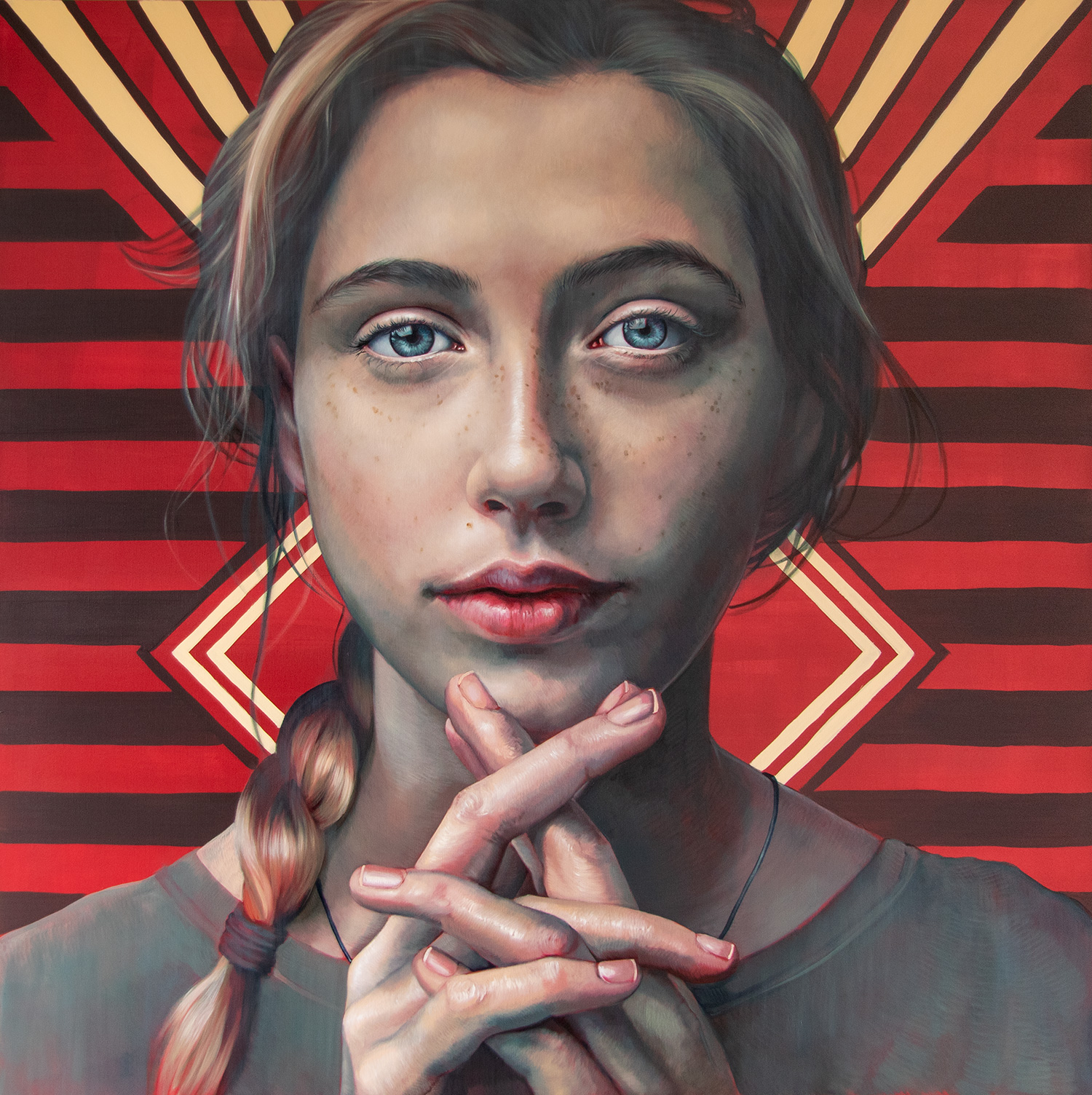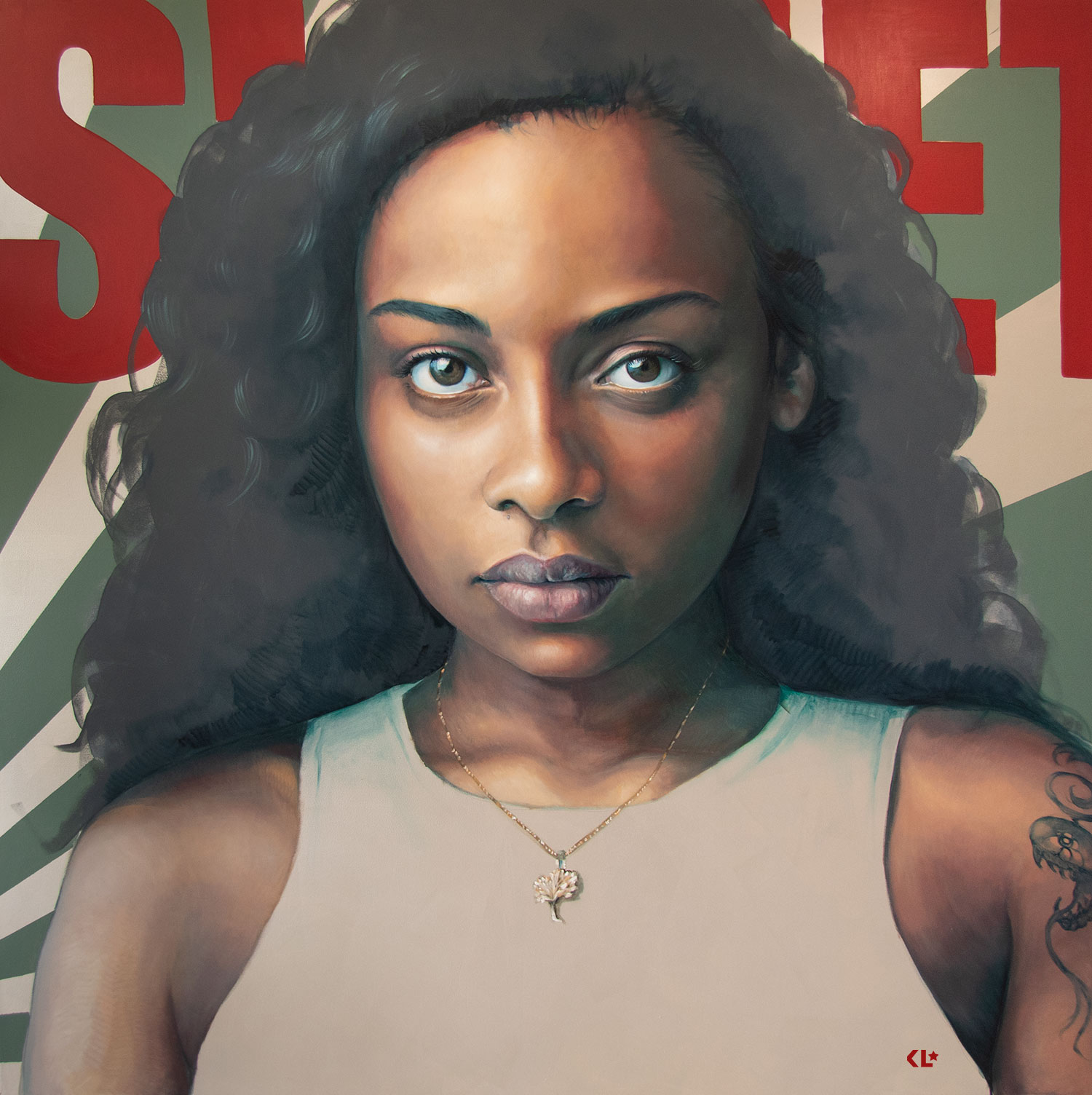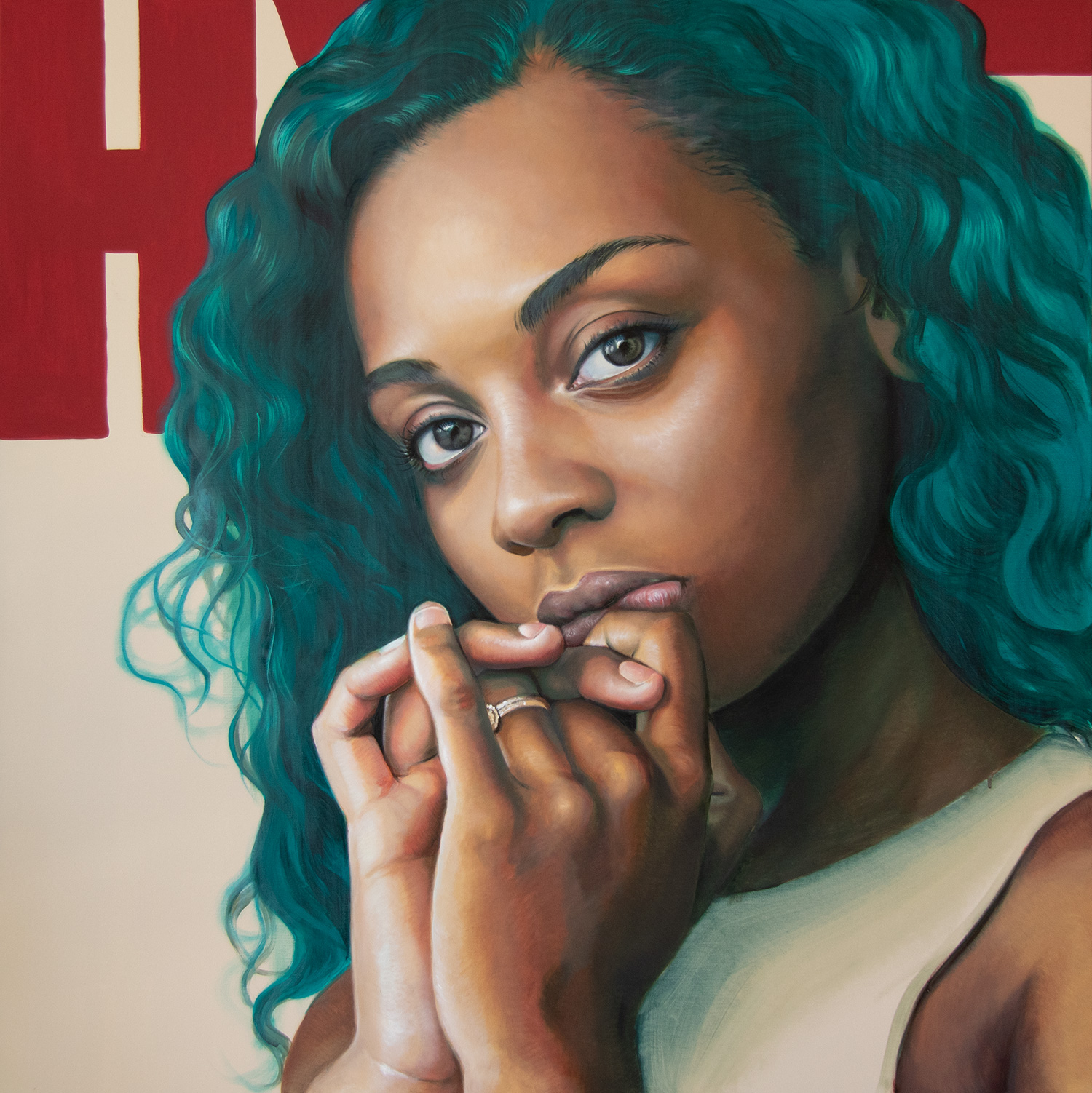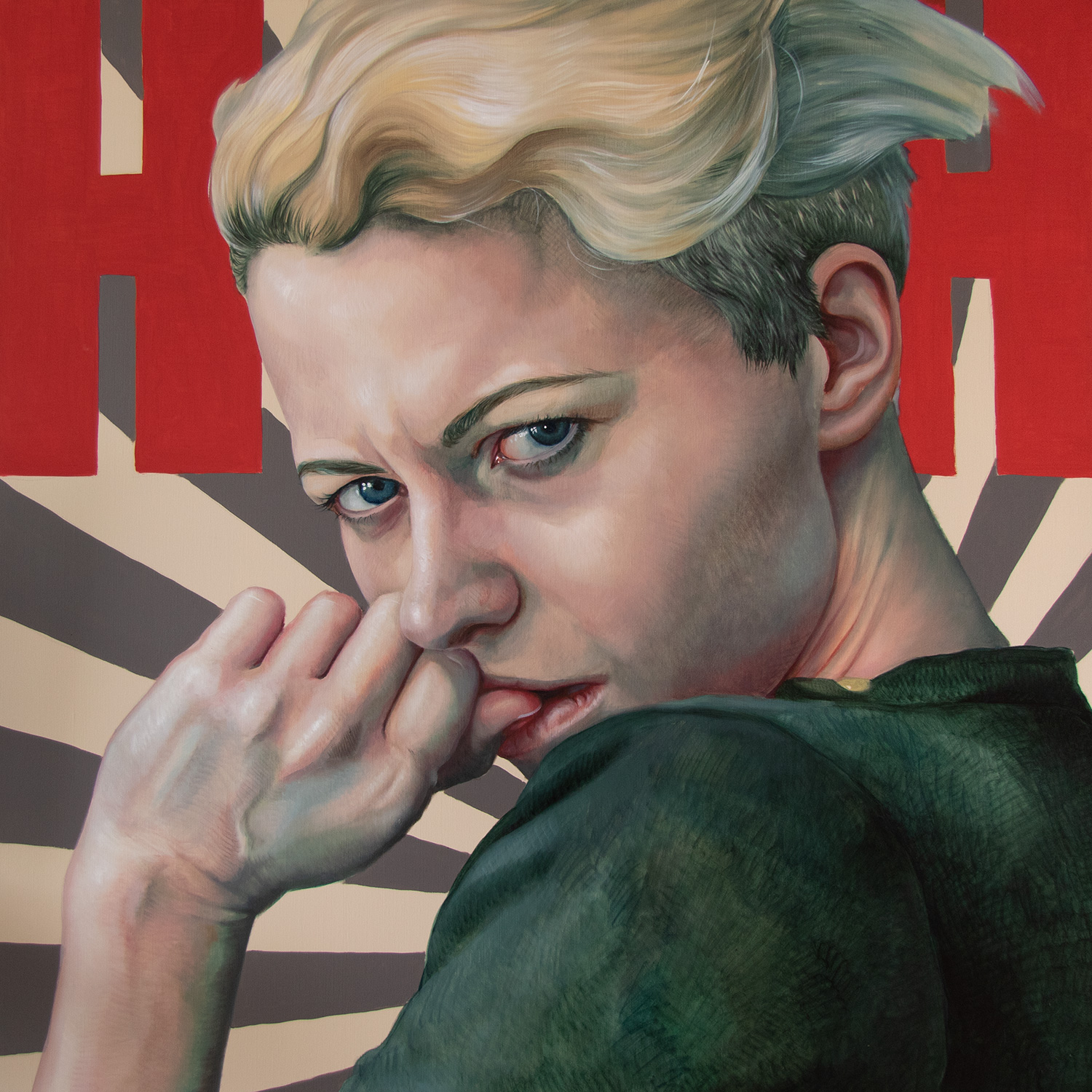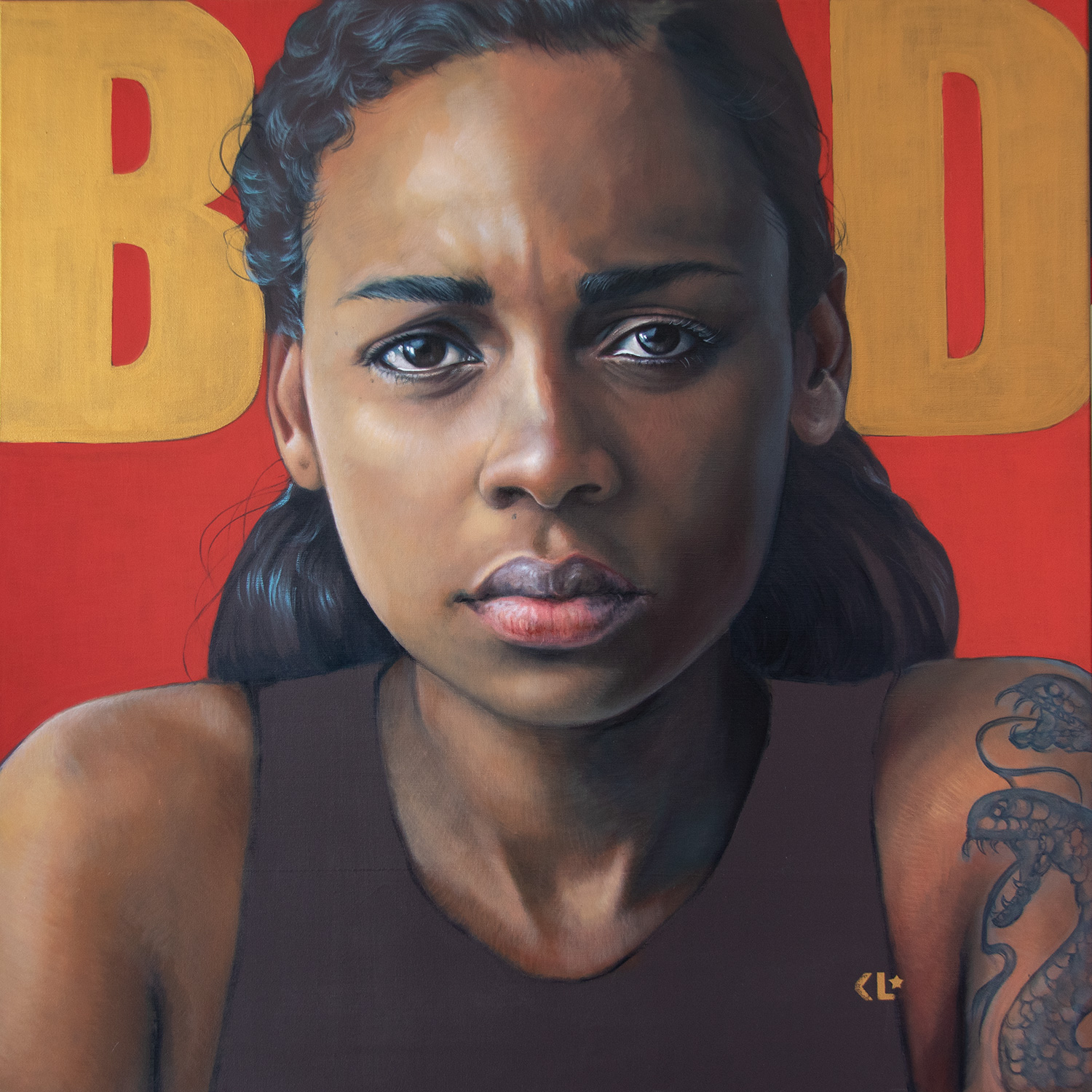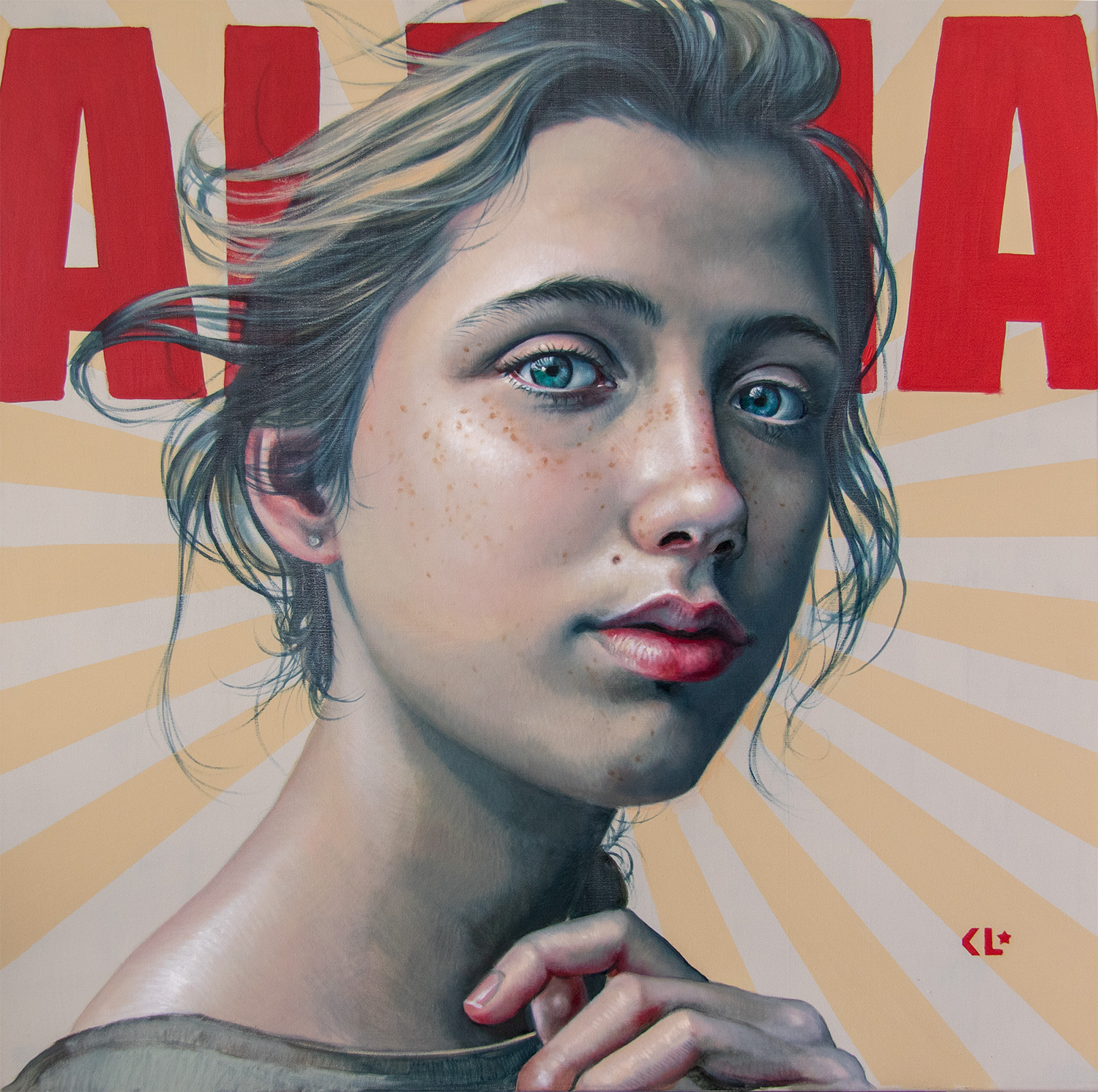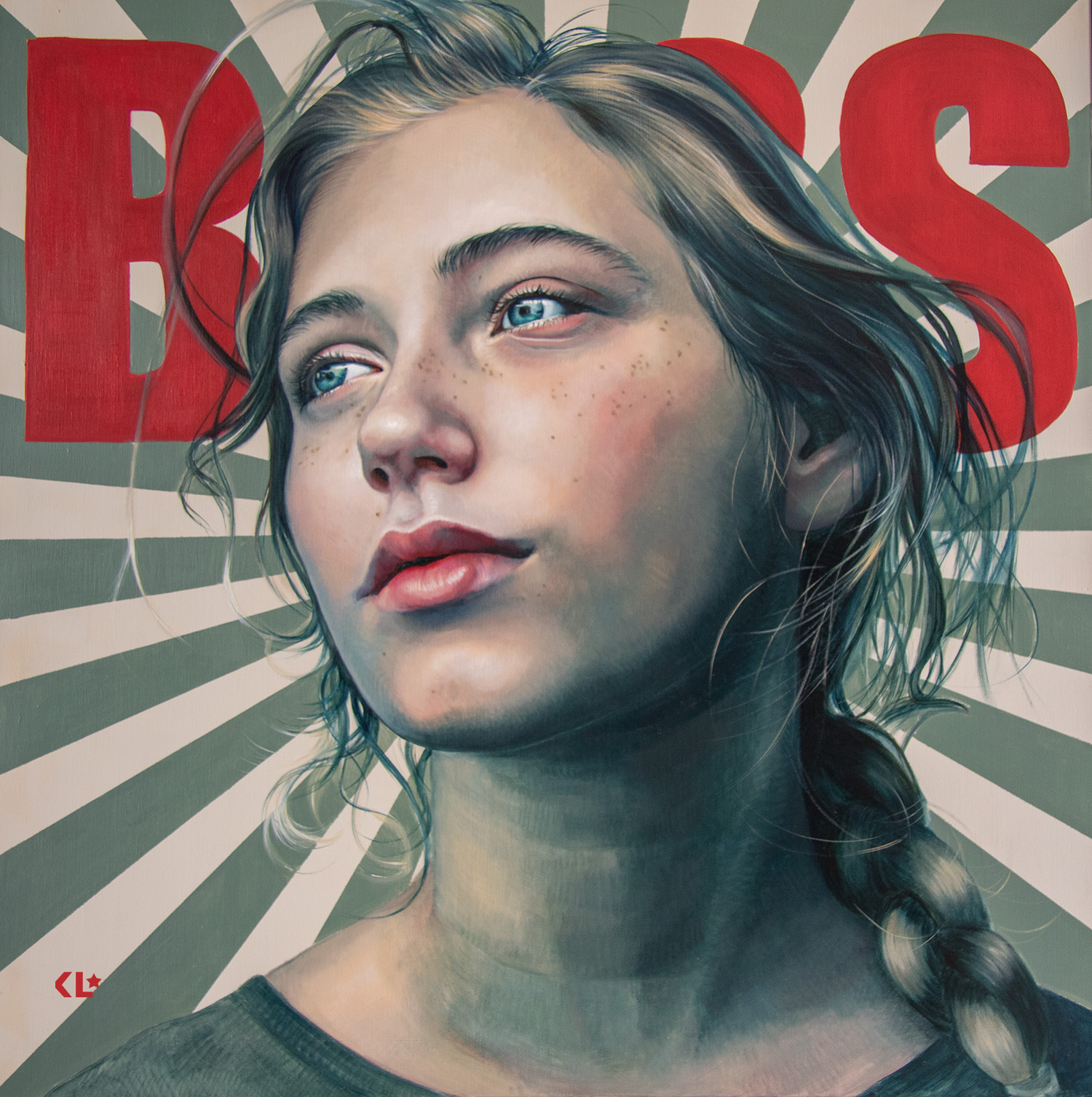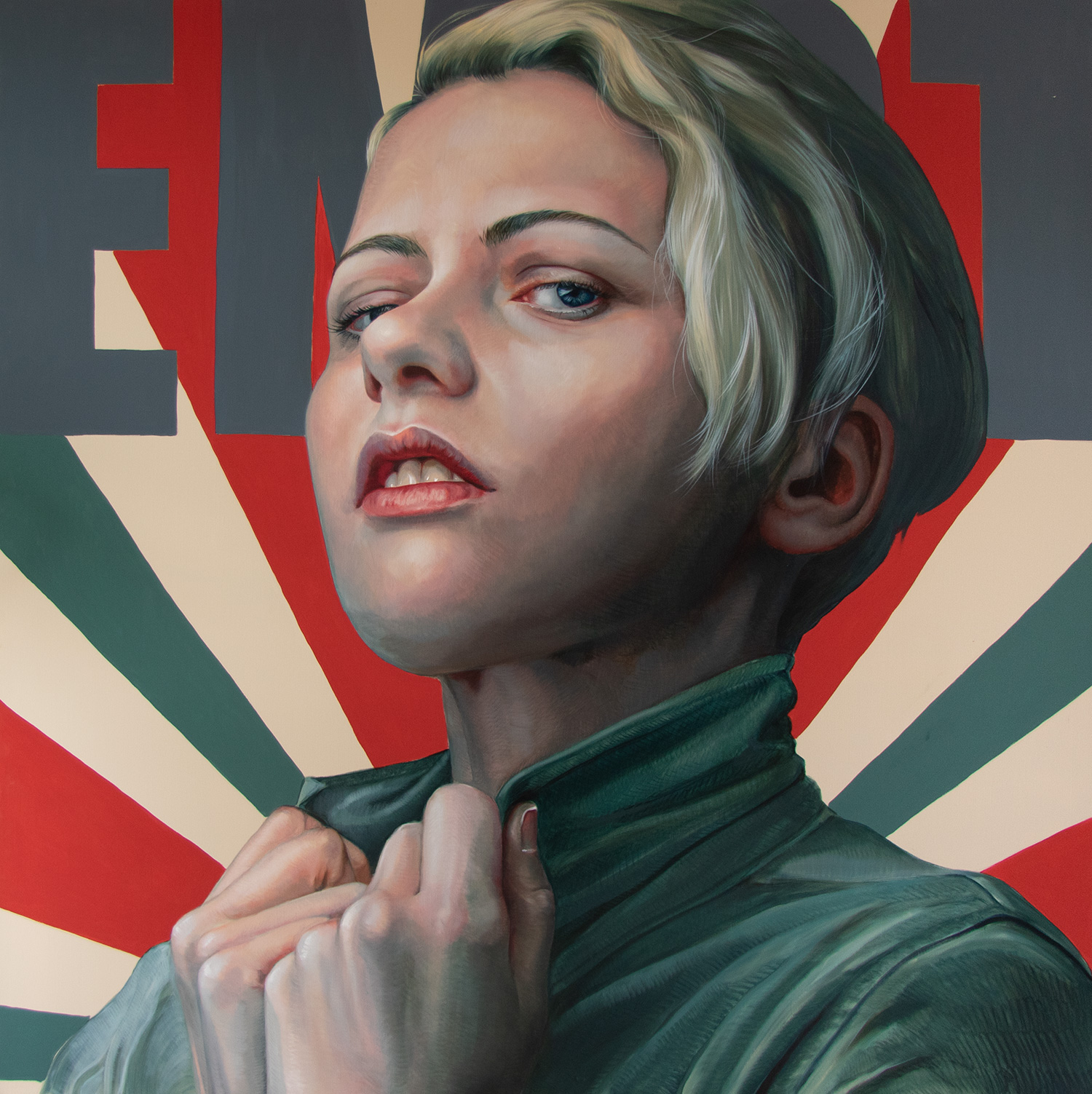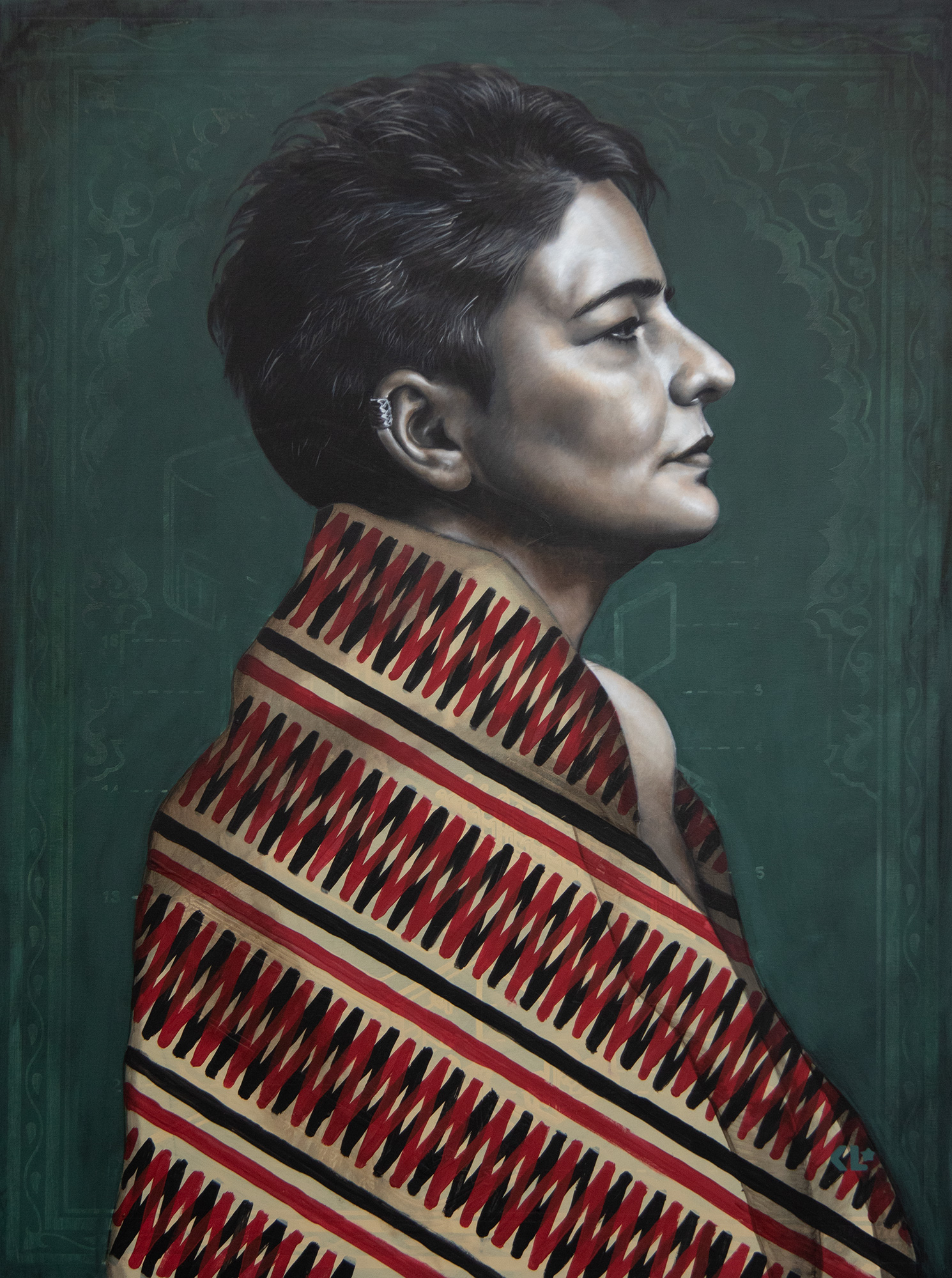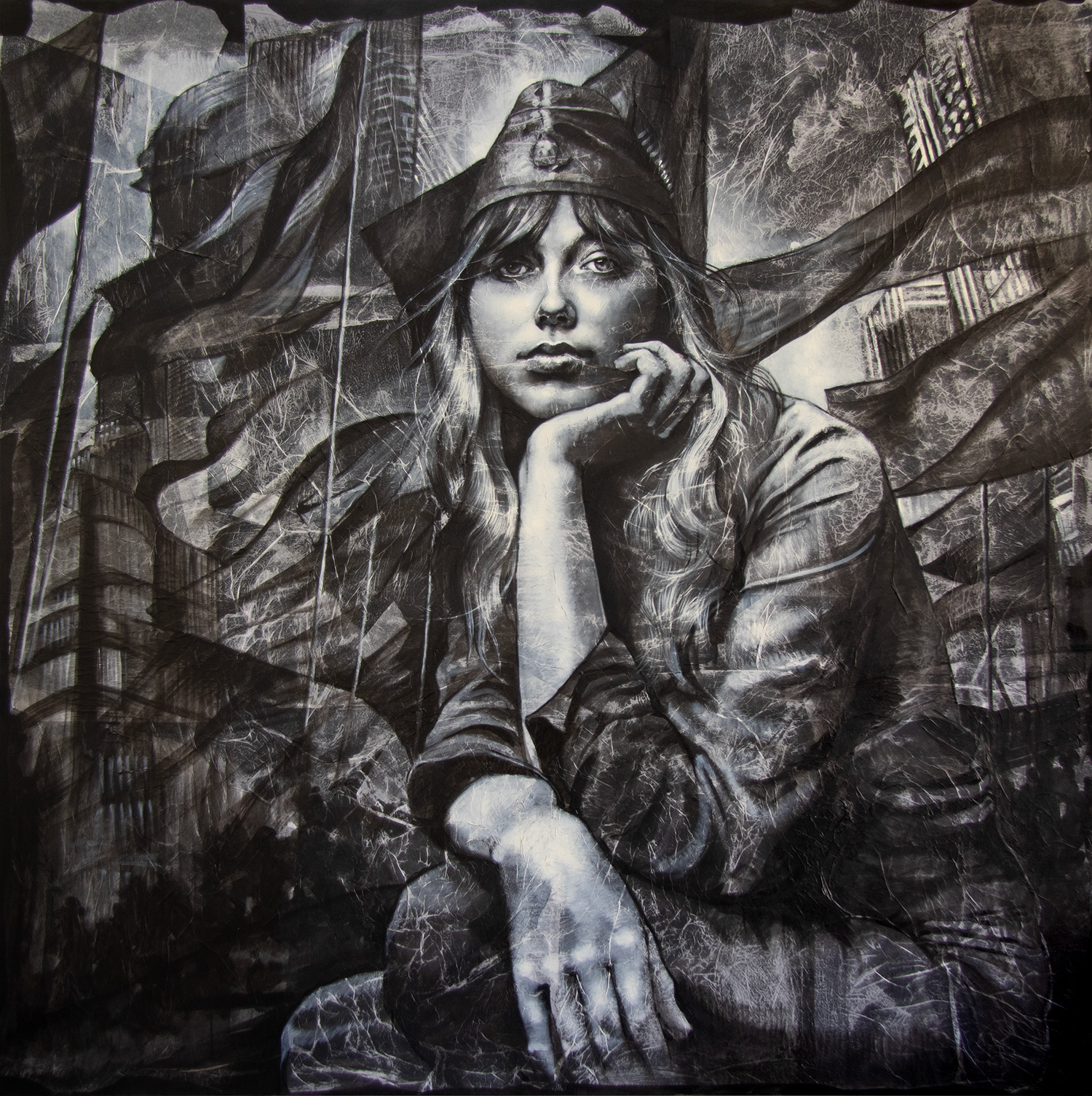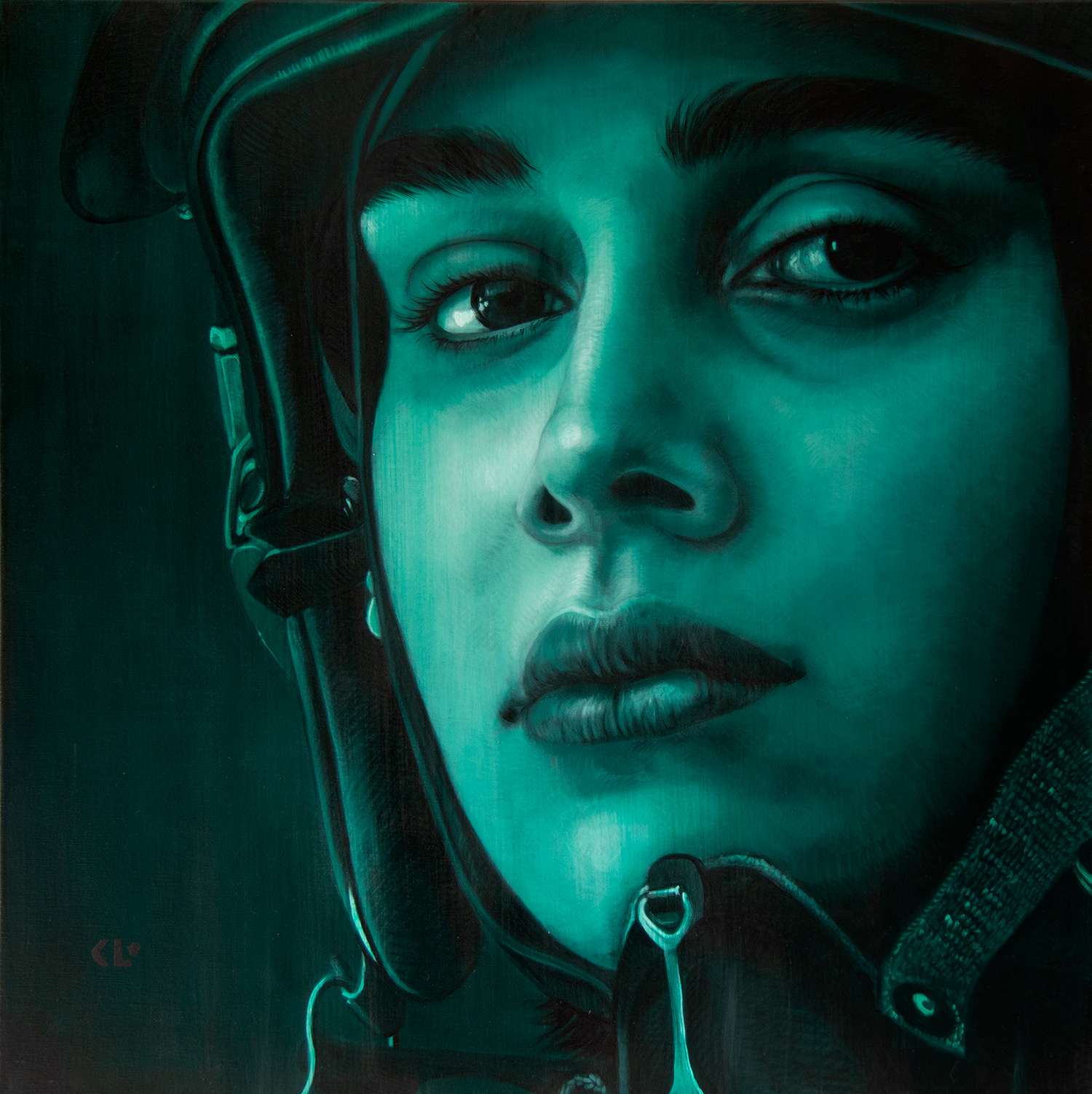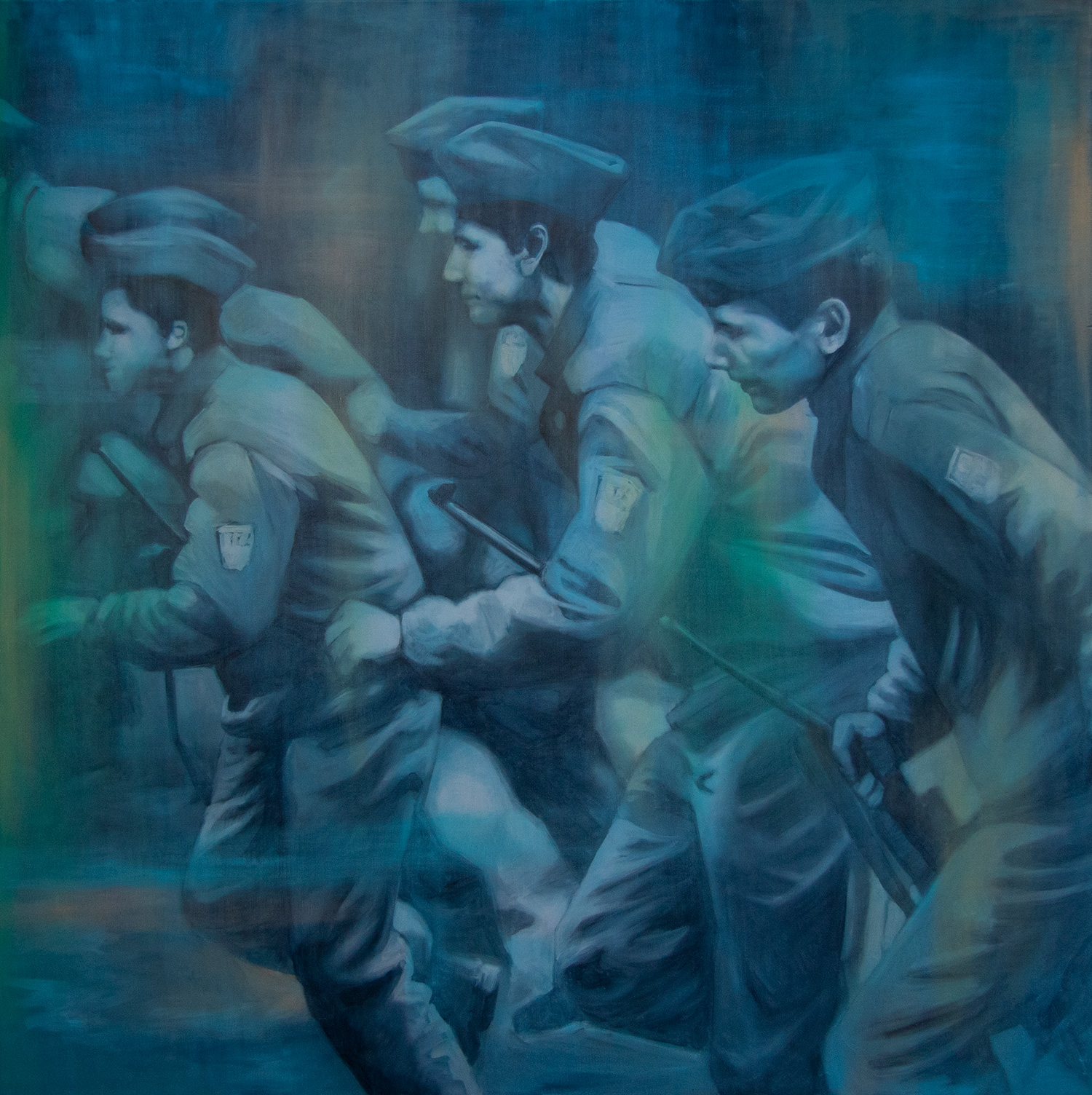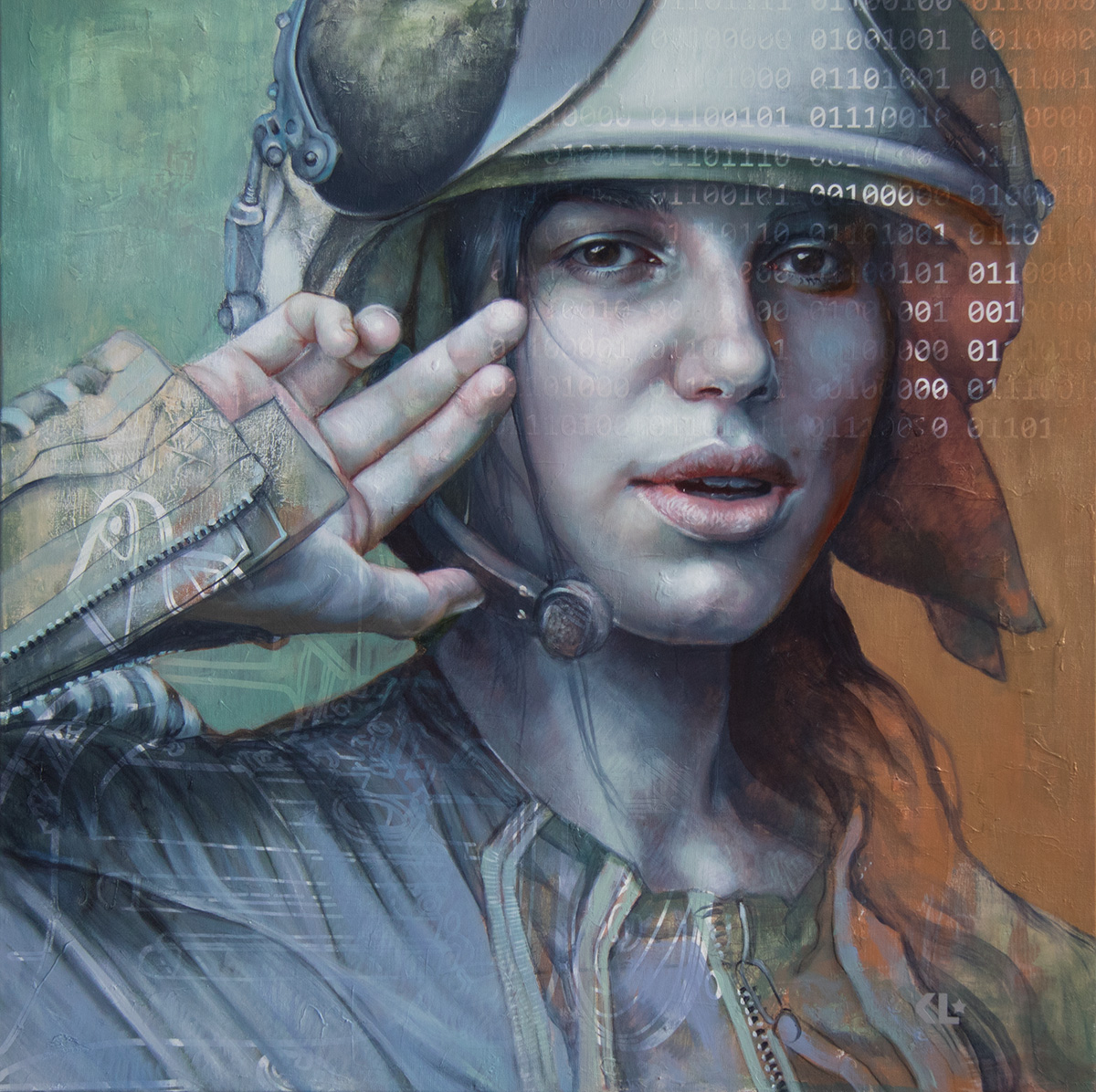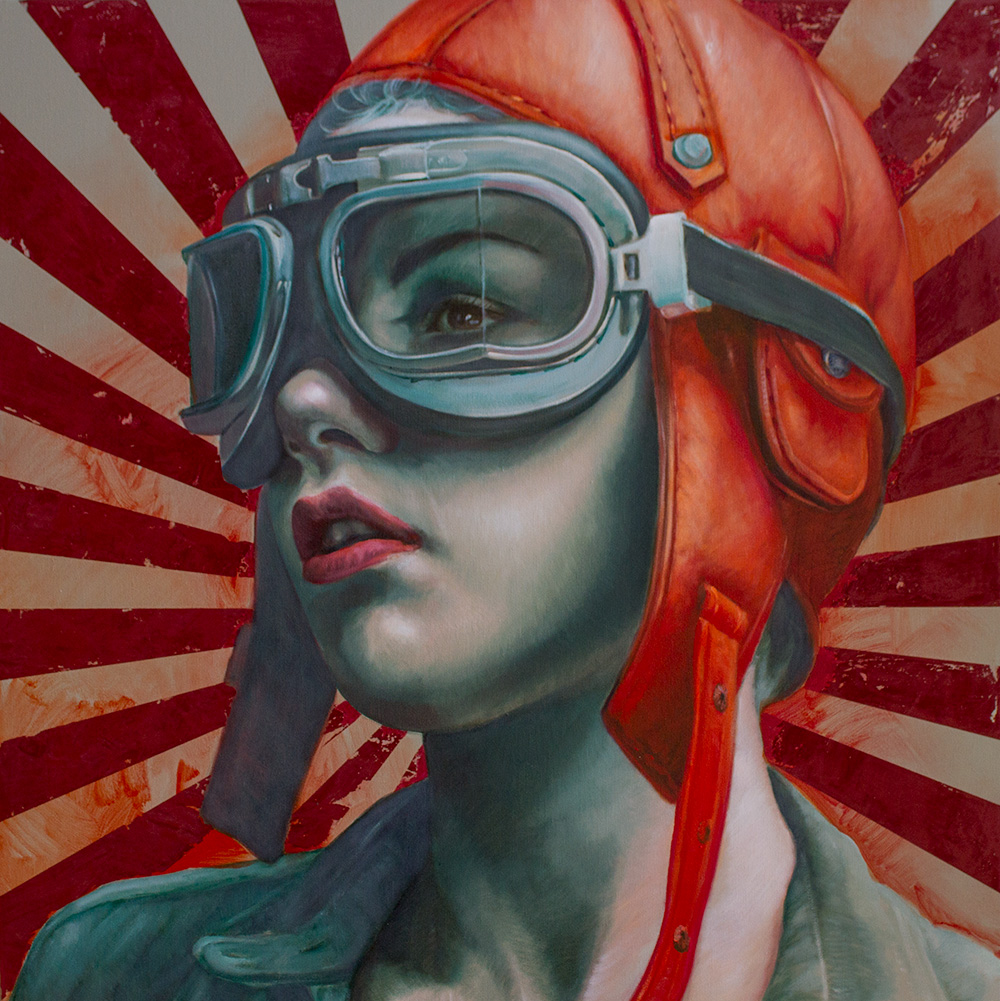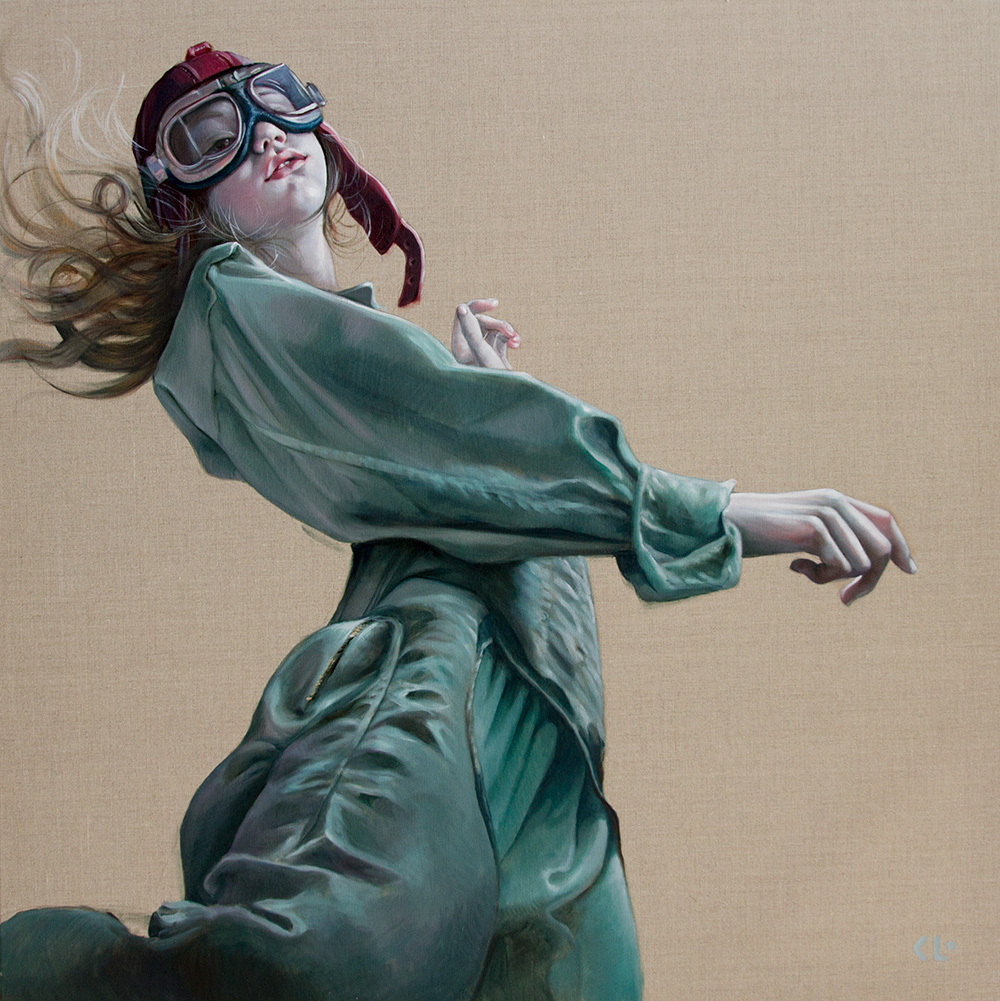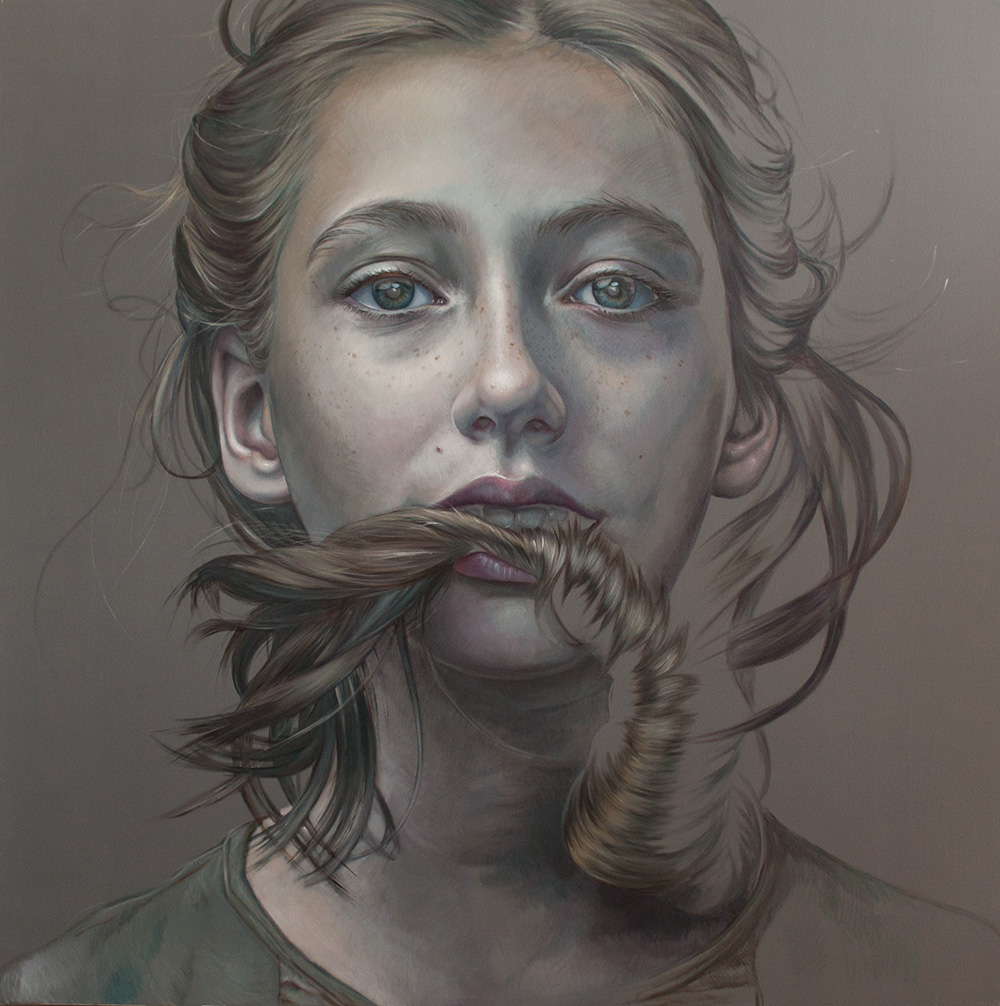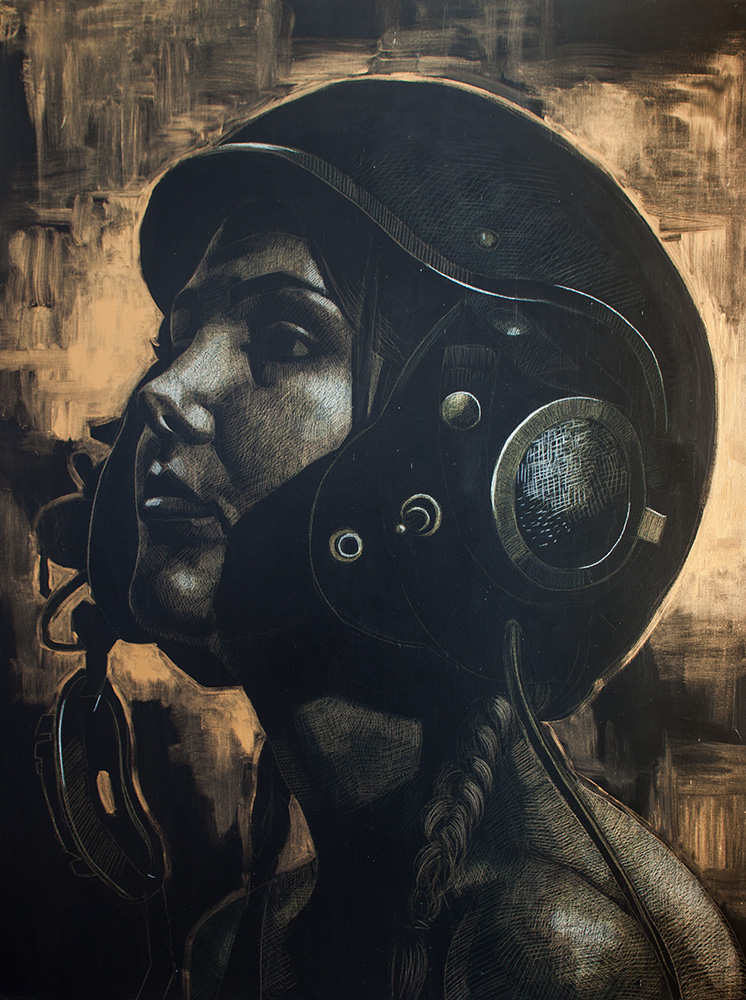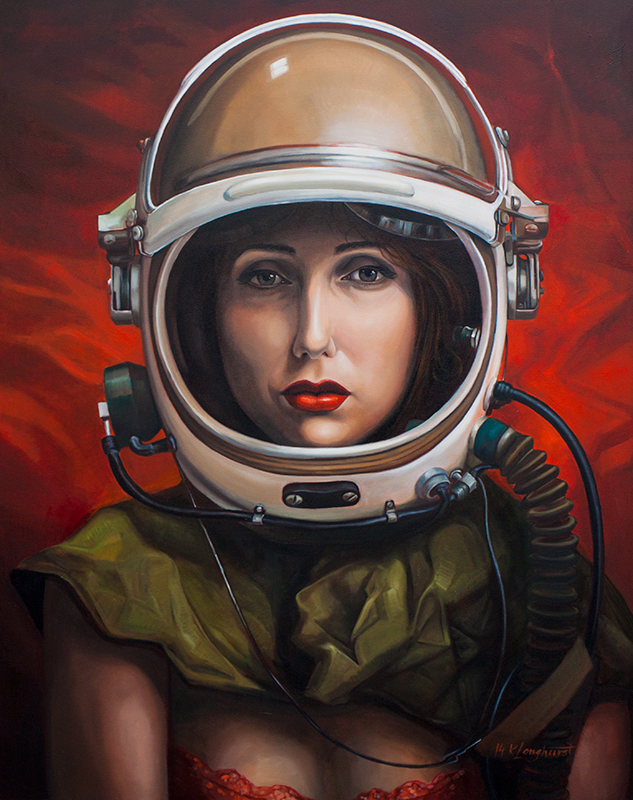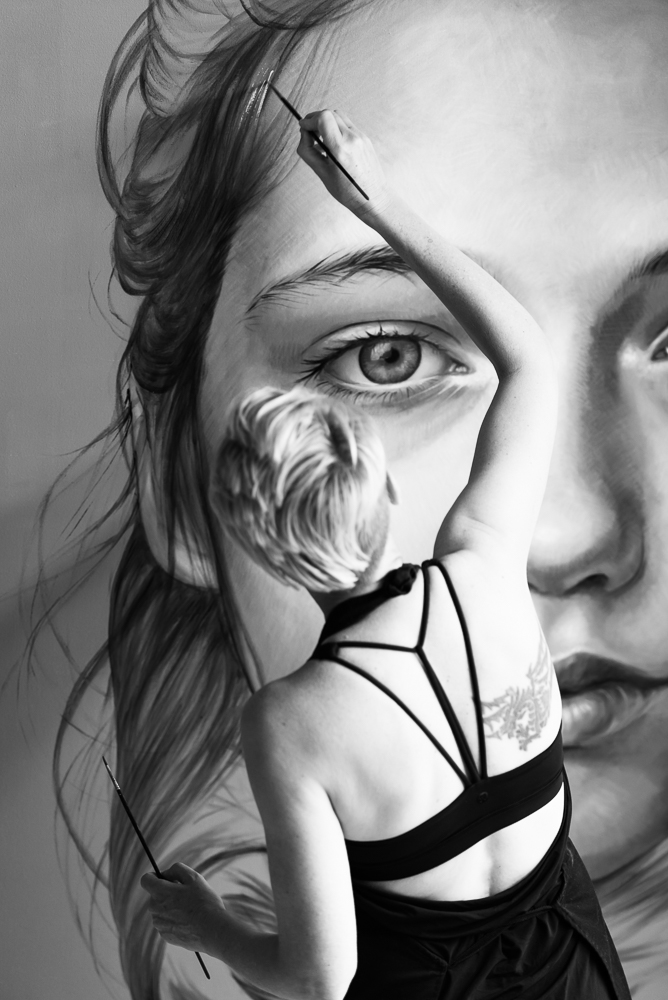Exhibition Essay by Kate McAuley
“Mind-Field” April 2022
Spending time with Kathrin Longhurst, either in person or through her art, is to enter a world that both exalts and challenges what it means to be a woman. Regardless of the prism through which she views her subjects, this is the common thread Longhurst has woven throughout her acclaimed body of work – from her earlier pieces, where she championed feminine power by subverting the ultra-macho propaganda posters that dominated the visual landscape of her East Berlin childhood and adolescence, to Mind-Field, her latest offering here, which examines how gendered language, labels and stereotypes, create a complex and often hazardous environment for women.
In her seminal work, Rage Becomes Her, the author and activist Soraya Chemaly asserts that the language we use to describe men and women has an enormous impact on how we perceive both ourselves and each other, particularly when it comes to self-worth and agency. Chemaly also concludes that these words, more often than not, subjugate women while perpetuating male dominance and authority. With Mind-Field, a play on the word minefield, Longhurst interrogates this statement by placing her female subjects against the backdrop of emotionally charged words. In the work entitled Sweet, for example, a woman stares out of the canvas with an expression that is anything but saccharine, while for Boss her subject appears both hopeful and naive rather than assertive and bold.
By revisiting the use of text in her paintings and the addition of bold geometric backgrounds inspired by the somewhat controversial American artist Frank Shepard Fairey, Longhurst once again raises her female subjects into strong and dominant entities, pushing them to the forefront of the canvas. Unlike traditional figurative paintings, which render women diminutive, chaste and in need of protection, these works exude strength as well as vulnerability, forcing the viewer to consider the complex relationship between labels and identity. Longhurst’s subjects each have a different response to the designation that’s been ascribed to them. Some are defiant, while others question the validity of the assertion. Some exhibit sadness, anguish or disbelief, while others claim ownership or are resigned to their assigned role. As a result, Mind-Field is a masterful interpretation of the gender bias in language.
As an artist, Longhurst continues to be a relentless advocate for the feminist cause – and there is no better time to be working in this sphere than now. Thanks to the ground swell of the global #metoo movement and advocates and sexual assault survivors such as Grace Tame and Brittany Higgins, the discourse surrounding the rights of women and girls has been plucked from the margins and once again entered into Australian mainstream conversation. In the past, commentators have indicated to Longhurst that her art is too obvious; a suggestion that has only resigned the artist to amplify her message further. Change does not come about a result of subtlety and suggestion. The Patriarchy is under threat and with Mind-Field Longhurst is adding her powerful voice to the revolution.

